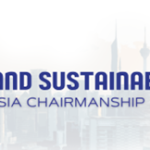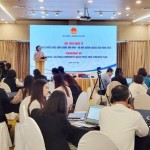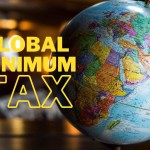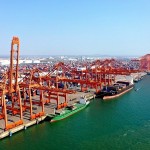Total number of posts 385.
As the ASEAN Economic Community (AEC) approaches the end of its Blueprint 2025 and moves towards developing a strategic roadmap through 2045, assessing and identifying factors shaping global trade in the next 20 years is essential. Such insights will enable policymakers to develop strategies that anticipate trends, minimize risks, and maximize future benefits.

Five megatrends projected to significantly impact ASEAN’s economic future include:
1. A Multipolar World: The world has continued to witness rapid, complex, and unpredictable developments in recent years. Peace, cooperation, and integration for development remain dominant global trends but are now challenged by intense fragmentation. Increasing polarization is being driven by global conflicts and strategic, geopolitical, and geo-economic competition. ASEAN must be prepared for heightened protectionism and disputes, which may affect the flow of finance, trade, and resources.
2. Shifts in Trade Flows: Geopolitical tensions are altering trade flows as major economies increasingly relocate parts of their supply chains to allied nations, aiming to mitigate risks associated with raw material instability. This shift could redefine the strategic positions of many countries within the global value chain. ASEAN should seize this opportunity by enhancing trade value surplus, reducing import dependence on China, and preparing for intensified competition from countries like India.
3. Technological Advancements: Investment in advanced technology, scientific research, and innovation continues to be a top priority for both nations and global corporations. Applications of artificial intelligence, automation, information technology, and big data are expected to drive substantial breakthroughs in the future, transforming behaviors, organizational practices, and societal structures. These advancements will spawn new industries and valuable products. To capture these trends, ASEAN must further develop infrastructure, boost comprehensive capacities (including finance), and adopt a responsible approach to technological progress to address challenges, such as job displacement due to automation and AI.
4. Climate Change: Rapid climate change, manifesting in altered weather patterns, extreme events, rising temperatures, and ecological shifts, poses significant challenges for all economies. Yet, green economic development and nature-based solutions are emerging as major global trends, fostering new industries and technologies aimed at climate adaptation and resilience. ASEAN is well-positioned to leverage these potential opportunities.
5. Demographic Shifts: ASEAN is expected to transition to a moderately high-income economy by 2045, with increased consumer spending supporting strong economic growth. However, ASEAN’s current demographic “golden period,” marked by a high proportion of working-age individuals, coupled with rising life expectancy, will lead to an aging population over the next 20 years. Higher wages could reduce ASEAN’s competitive advantage as a low-cost production destination, highlighting the need to enhance labor productivity to align with these new conditions.
These trends present both opportunities and challenges, with far-reaching impacts across all sectors globally. To navigate these emerging dynamics, ASEAN must integrate initiatives and solutions within its 2045 Strategic Plan, aiming to strengthen regional integration to boost resilience, foster economic growth, and enhance adaptability. A targeted approach to each trend is essential to mitigate risks and capitalize on the opportunities these developments bring.














